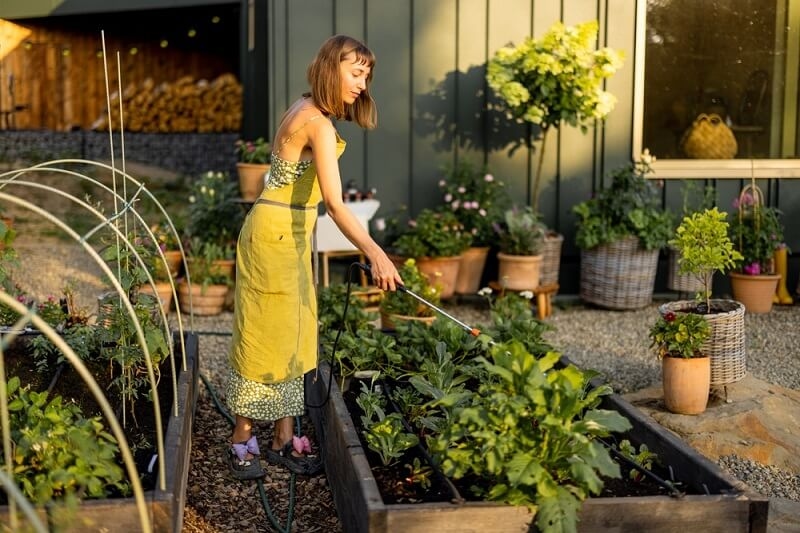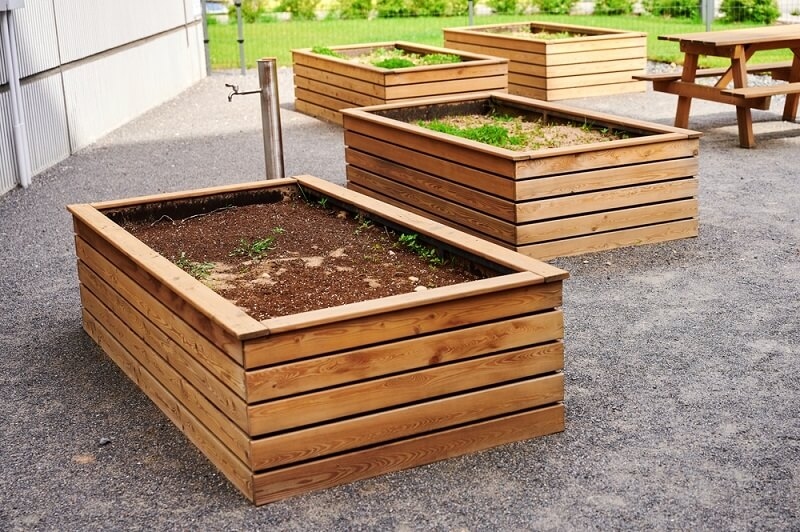DIY Raised Garden Beds for Building Your Perfect Home Garden

Building a successful garden in your yard begins with the proper foundation. Do-it-yourself raised garden beds offer gardeners an efficient, affordable, and incredibly versatile means of cultivating vegetables, herbs, and flowers. With simple raised bed building instructions to guide you, even novices can have lush, productive gardens. Knowledge of the correct fill soil for raised garden beds and what not to do guarantees your raised beds thrive year after year.
Why Choose DIY Raised Garden Beds?
Raised garden beds are more than a passing gardening fad—they offer many advantages to beginning and seasoned gardeners alike:
- Improved soil management: Steer clear of poor native soil and tailor the bed with nutrient-loaded fill soil for raised garden application.
- Better drainage: Raised beds avoid waterlogging, making the plants healthy.
- Accessibility: Minimal bending and straining, ideal for mobility-impaired gardeners.
- Pest control: Smoother protection of plants from slugs, weeds, and other pests.
- With clear knowledge of the advantages and disadvantages of various designs, gardeners can choose the ideal bed design for their area, be it rectangular, square, or tiered.
Getting Started: Building a Simple Raised Bed Instructions
Beginning a raised garden bed project can look overwhelming, but precisely building simple raised bed plans makes it easy:
- Select a site: Select a location that receives plenty of sunlight, at least 6–8 hours each day.
- Choose the materials: Use the finest materials for raised bed gardening, including cedar, redwood, or composite material lumber. Avoid using treated lumber, as it could emit chemicals.
- Measure and mark: Standard beds - preferably less than 4 feet wide (standard bed size is a comfortable dimension to reach across) and 6 - 8 inches high for shallow-rooted crops, but 12 - 24 inches high for deeper-rooted crops.
- Assemble the frame: Fasten using screws or brackets, for strength, and to ensure corners are square and level.
- Fill with soil: Use quality fill soil for raised garden use. A mix of compost and organic matter will give you the best fertility.
- Plant: Plant using spacing recommendations for that plant, as well as watering and sunlight conditions.
Choosing the Best Materials for Raised Bed Gardens
Material selection will affect the length of life, safety, and appearance of the garden. Materials available include:
- Cedar or Redwood: Attractive appearance, natural rot resistance, and long life span.
- Composite Lumber: Low maintenance, long-lasting, environmentally friendly.
- Galvanized Steel: Cool look, rot-resistant, warms soil quickly.
- Concrete Blocks or Bricks: Heavy, longer-lasting, and add an artistic component to the garden.
Each option has benefits and drawbacks. Knowing them keeps you from rookie mistakes of choosing materials that warp, rot, or impact the health of the plant.
Filling Your Raised Garden Bed: Soil Essentials

Healthy soil is essential. Fill dirt for raised bed gardens should contain:
- Topsoil: Provides structure.
- Compost: Provides nourishment and moisture retention.
- Organic additives: Such as peat moss, coconut coir, or worm castings.
Do not use plain garden soil; it can compact or lack nutrients.
Layering correctly ensures roots perform well and drainage is optimal.
Pros and Cons of Different Designs
Raised beds come in several styles. Recognizing the advantages and disadvantages of different styles will allow you to determine the best raised bed design for you.
- Rectangular Beds: Not very efficient for growing rows of seedlings, and can be harder to make.
- Square Foot Gardens: Good for small spaces, grow things densely, and help limit watering.
- Tiered or Multi-Level Beds: Creates great interest and utilizes vertical space effectively.
Each style has its pros and cons! For example, Square Foot gardens save watering time, while tiered beds may require more time and materials to build.
Avoiding Beginner Raised Bed Mistakes
Even with the best of plans, newbie gardeners can mess things up!
Some typical newbie raised bed blunders include:
- Selecting an inappropriate soil blend
- Constructing beds that are too large to be accommodated easily
- Overlooking irrigation planning
- Disregarding local climate and sun patterns
- Plunking too many plants in the same area
By learning from their errors, gardeners can avoid wasted time, money, and aggravation.
Maintenance Tips for Long-Lasting Raised Beds
It is your responsibility to keep your DIY raised garden beds productive:
- Watering regularly: Promotes even moisture across the bed.
- Mulching offers numerous benefits, including water conservation, weed suppression, and soil temperature moderation.
- Crop rotation will help prevent disease as well as improve soil fertility.
- Seasonal soil refresh: Add compost or organic matter each year for continued growth.
Advanced Tips for Raised Bed Success
Now that you have your first raised bed, here are some advanced strategies to consider:
- Companion Planting: Increase yield while reducing pests via exposure.
- Vertical Support: Use trellises for tomatoes, beans, or cucumbers.
- Succession Planting: Use rotation to continue growing in every bed throughout the seasons, and keep harvesting year-round.
- Irrigation Systems: Use drip lines or soaker hoses for watering.
Maximizing Your Raised Garden Bed Yield
If you create your raised garden bed for the first time, planning and creating crop rotations will keep your soil healthy and disease-free. Each season, move the crops to a new location. Use crops that help or work well together, called "companions". Always use high-quality fill soil for raised garden beds and ensure you have established a moisture level that works best for the crops grown in your raised garden bed to avoid over- or under-watering. When you expand your garden above the first raised garden bed, consider the advantages and disadvantages of each design. These include tiered beds or multi-level raised garden beds that will increase planting area and make harvesting easier, maximizing productivity throughout the growing season.
Conclusion: Build Your DIY Raised Beds Today
Building DIY raised garden beds is a rewarding way to grow fruits, vegetables, flowers, and even a green and eco-friendly garden. With appropriate building simple raised bed instructions, proper materials for raised bed gardens, and nutrient-filled soil for raised garden beds, novice raised bed gardeners can expect to produce professional-type yields. Avoid common mistakes made by inexperienced gardeners and learn about the pros and cons of various raised bed designs.
With patience and planning, and the advanced tips above, your backyard will be a healthy, productive oasis bringing you beauty, nutrition, and satisfaction for years to come.
This content was created by AI

